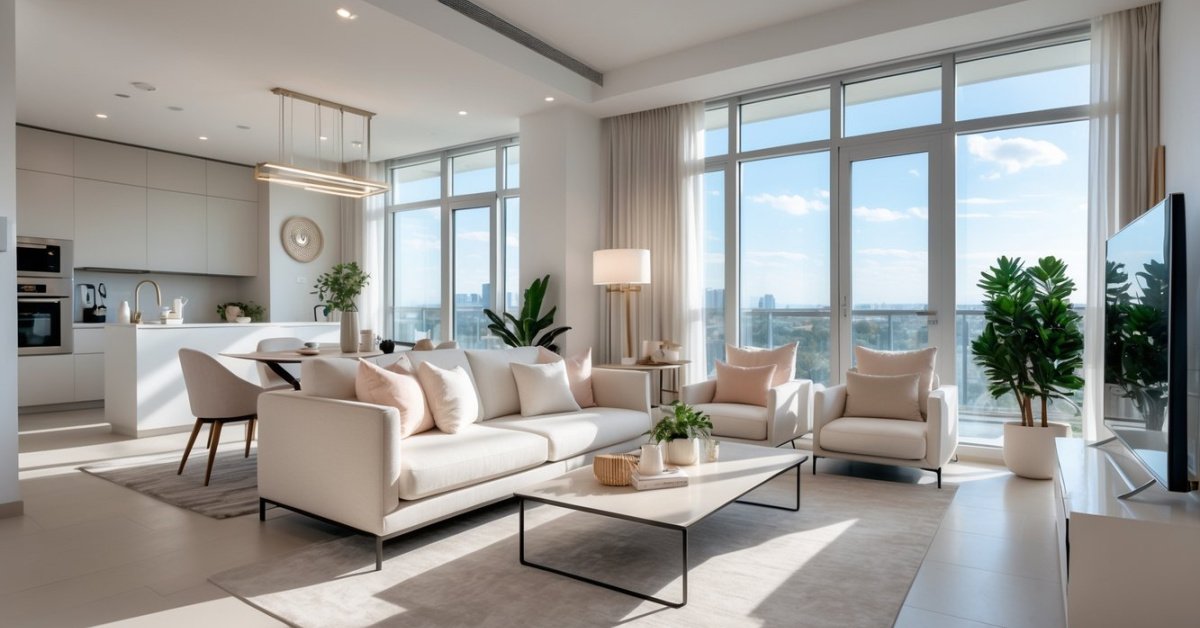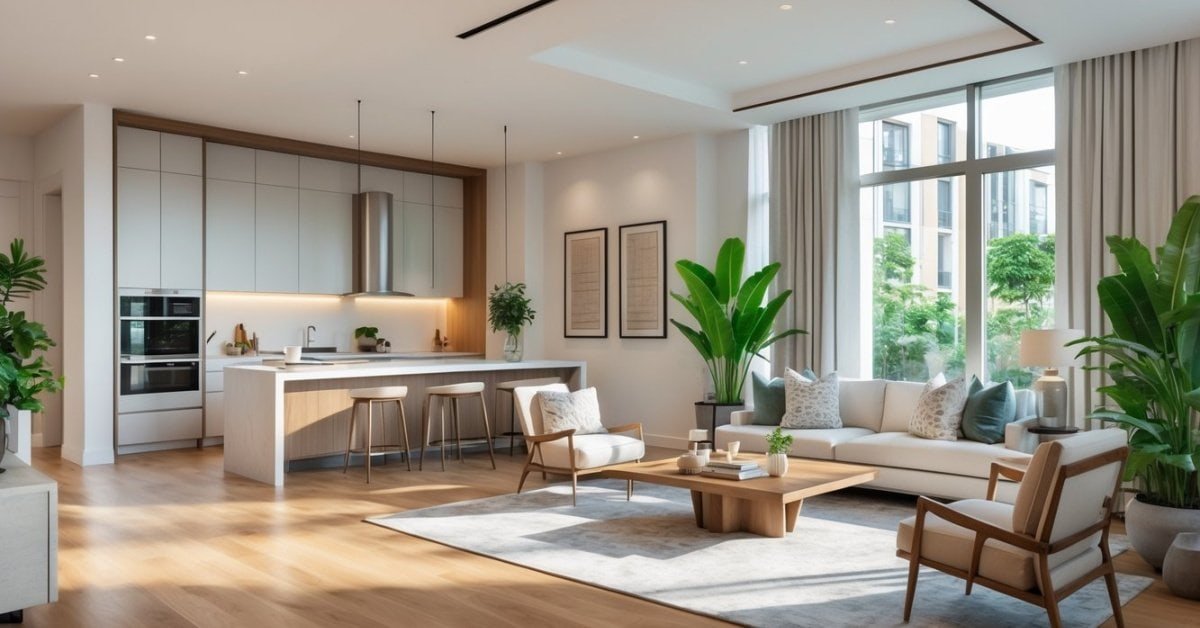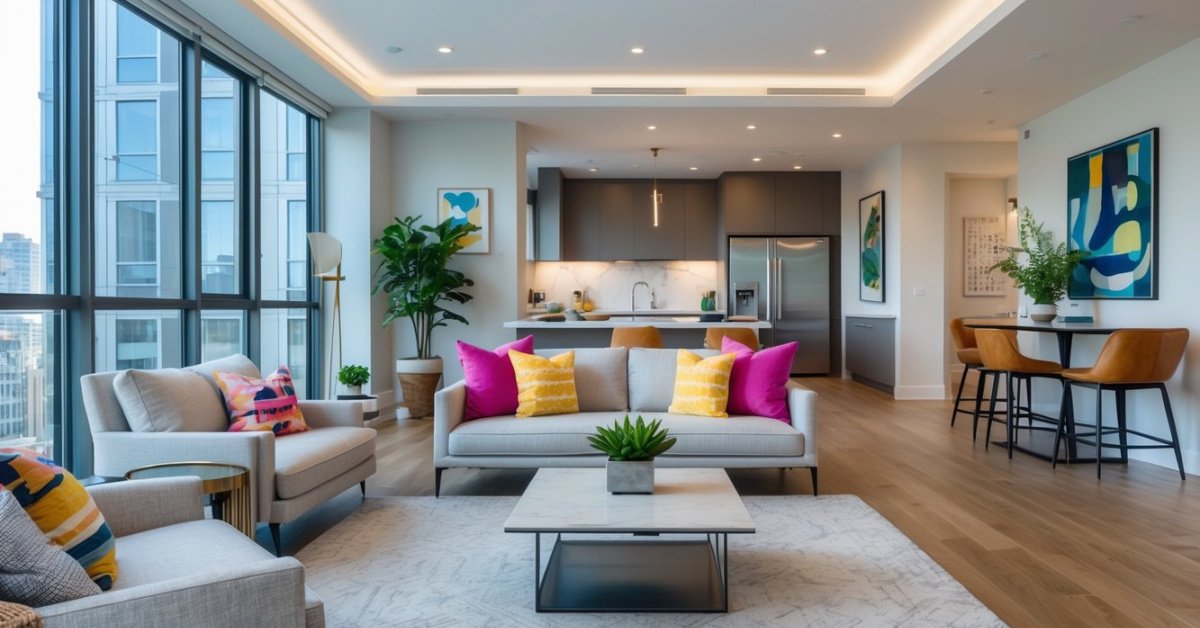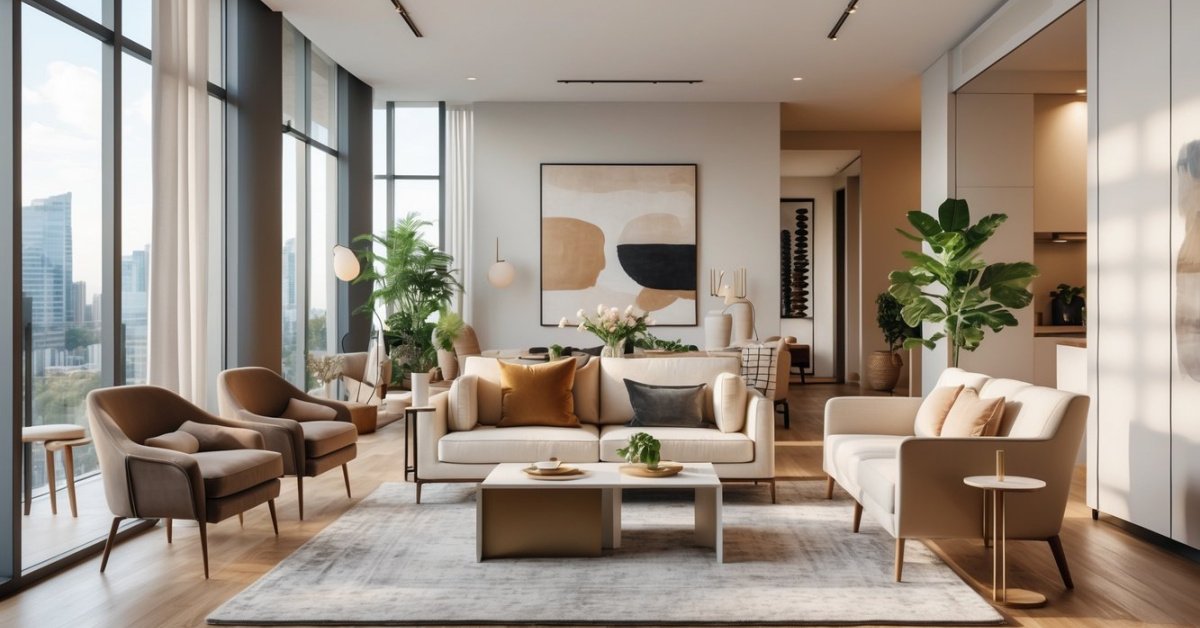Key Takeaways
- Maximizing vertical space in an apartment increases storage and functionality without compromising floor area, making even small spaces feel larger and more organized.
- Wall-mounted shelves, tall cabinets, and over-the-door organizers are effective, renter-friendly solutions to utilize underused vertical surfaces.
- Multi-purpose furniture like loft beds, bunk beds, and tall bookcases create extra storage while visually expanding room height.
- Incorporating vertical gardens, hanging art, and statement pieces adds style and personality, enhancing both the look and value of your apartment.
- Regularly decluttering, labeling storage, and grouping similar items help maintain clutter-free, efficient, and visually appealing vertical spaces.
Living in a small apartment can feel a bit cramped sometimes but I’ve found that the secret to making the most of every inch is to look up. Walls and corners offer so much untapped potential if you’re willing to get a little creative.
I used to think I’d run out of storage options until I started exploring ways to use vertical space. Suddenly my home felt bigger and more organized without losing its cozy charm. Whether you’re a collector of books plants or just looking for a spot to stash your shoes there’s a solution waiting above eye level.
The Importance of Vertical Space in Small Apartments
Maximizing vertical space increases usable square footage, especially when floor area feels limited. In every apartment I’ve redesigned, floor-to-ceiling storage transformed cluttered rooms into organized, comfortable living zones. Shelving units, tall cabinets, and wall-mounted organizers extend storage capacity without expanding the apartment’s footprint.
Accessing overhead zones creates new options for books, décor, plant displays, and kitchenware storage. These solutions work best when wall surfaces are fully used, such as placing open shelving above desks or hanging storage above doors. Using vertical planes also improves traffic flow since floor-level storage rarely obstructs pathways.
Preserving visual openness remains essential. Tall yet slim furniture pieces make ceilings look higher, contributing to a spacious feeling. When I flip properties, I always look for alcoves or awkward corners to add built-in shelving—these details create functional value and attract renters who want efficient layouts.
Vertical solutions increase asset value. Apartments that use wall and ceiling space attract buyers and renters looking for practical layouts with no wasted corners or dead space. I consistently receive positive feedback from clients after revealing how vertical integration upgrades small living areas without major renovation costs.
Creative Storage Solutions for Vertical Space
Maximizing every inch of an apartment becomes second nature when I’m designing for city living. I always look up first—vertical storage makes small footprints feel much bigger and quickly declutters sightlines.
Wall-Mounted Shelves and Cabinets
Wall-mounted shelves and cabinets turn empty space into hard-working storage. I install floating shelves above desks, beds, or sofas, keeping essentials like books, photos, and tech off surfaces. For example, a set of staggered wooden shelves above a kitchen counter holds jars, cookbooks, and utensils where base cabinets can’t reach.
Cabinets with soft-close hinges and sleek hardware fit slim alcoves or span full walls. In recent renovations, I’ve used tall cabinets in place of bulky dressers, which opens up floor space and pulls the eye upward. Modular options, such as IKEA BESTÅ units, let renters or owners create custom storage walls without permanent construction.
Utilizing Over-the-Door Organizers
Over-the-door organizers instantly create extra storage in overlooked places. I use these for shoes in narrow entryways, cleaning supplies in bathroom closets, and pantry items on the backs of kitchen doors. Mesh or clear-pocket organizers keep everything visible and easy to grab.
On closet doors, I add multi-tier racks for bags, scarves, or hats to keep wardrobes streamlined. For renters, these organizers avoid drilling or damage, since most fit snugly without tools. Because I work in apartments with strict rules, this flexibility lets me deliver storage upgrades without risking security deposits or resale value.
Furniture That Maximizes Vertical Space
Finding the right furniture makes all the difference when I’m designing or renovating apartments. I always look for pieces that draw the eye upward and multiply storage, especially when square footage is limited.
Loft Beds and Bunk Beds
Loft beds and bunk beds free up valuable floor space. I often recommend loft beds for studio apartments since they create room underneath for a workspace or seating. Bunk beds work great for kids’ rooms or guest spaces. In one recent flip, I installed a custom loft with integrated shelves, leaving room below for a compact sofa. Solid railings and stable ladders matter for safety, especially if the bed sees daily use.
Tall Bookcases and Storage Towers
Tall bookcases and storage towers offer vertical storage without eating up floor area. I’ve used 72-inch or even 84-inch bookcases in living rooms, home offices, and bedrooms—ideal locations that might otherwise stay bare. Custom-built towers in corners hold décor and books while drawing attention to height. In kitchens, slim floor-to-ceiling storage cabinets fit snugly beside fridges or in alcoves, handling pantry items or cleaning supplies. For clients wanting a fully finished look, I’ll top bookcases with trim to create the appearance of built-ins. These solutions always help show off vertical space and create a tidier footprint in every flip.
Decorative Ways to Use Vertical Space
Decorative strategies for vertical space instantly add personality and style to any apartment. I’ve used these approaches to make even the smallest units stand out, both for buyers and for my own rentals.
Vertical Gardens and Hanging Plants
Vertical gardens and hanging plants bring life to blank walls and unused airspace. I install wall-mounted planters above kitchen cabinets, arrange hanging pots near windows, and add trailing vines from tall shelving units. This method works well in apartments with limited natural light when I choose low-maintenance species like pothos, snake plants, or ferns. Planters with built-in irrigation make it easy for tenants and owners—especially in busy buildings—to keep greenery fresh. I also use tiered plant stands in corners to create natural visual focal points without cluttering the floor.
Hanging Art and Statement Pieces
Hanging art and statement pieces at varying heights draws eyes upward and accentuates ceiling height. I stack framed art vertically above consoles or sofas, use gallery rails for easy rotation, and favor large-format pieces to anchor small rooms. Leaning mirrors tall against a wall multiplies light and creates a dramatic ceiling-to-floor effect. In model units, I’ve hung sculptural lighting or woven wall hangings to add dimension and reflect current design trends. Each method uses vertical space to enhance both value and style in apartments.
Tips for Maintaining a Clutter-Free Vertical Space
- Rotate vertical storage displays
I swap out books, art, or decorative items on shelves every season or project cycle to keep displays looking fresh and avoid clutter buildup. Frequent refreshes make it easy for me to spot unused or out-of-place items.
- Use tall cabinets with closed storage
I choose cabinets with doors for most vertical storage projects, especially in high-traffic areas like kitchens or entryways. This keeps dust out and hides the visual mess, making the room feel calmer and more open.
- Label baskets, bins, and boxes
I always add labels to baskets, storage bins, and fabric boxes on higher shelves or inside tall cabinets. Clear labels streamline the process when I or any renter need to grab something quickly, and it prevents accidental clutter when returning items.
- Set monthly decluttering reminders
I schedule recurring monthly reminders to check vertical shelves and organizers for accumulated clutter. When I revisit each zone consistently, forgotten or excess items get cleared out before they become a problem.
- Limit seldom-used items overhead
I only place infrequently used items (like seasonal décor or keepsakes) on the highest shelves or overhead zones. Everyday essentials stay at comfortable heights for easy access, which keeps day-to-day life tidy and efficient.
- Group similar items for function and style
I display items by category, like stacking glassware, grouping planters, or lining up shoes, to give vertical zones a unified look. This approach not only streamlines organization but also highlights focal points in each room.
- Prioritize quality over quantity
I remind myself (and my clients) that fewer, well-chosen vertical storage pieces work better than filling every inch with shelving. Well-planned storage avoids visual chaos and makes the space more inviting for both living and resale.
Conclusion
Making the most of vertical space has completely changed the way I see apartment living. With just a few thoughtful tweaks and some creative storage solutions I’ve managed to turn every inch of my place into something both useful and stylish.
It’s amazing how much more open and welcoming my home feels now that I’m using the walls and corners to their full potential. If you’re looking to create a space that feels bigger and works better for your lifestyle don’t overlook what’s right above you.





